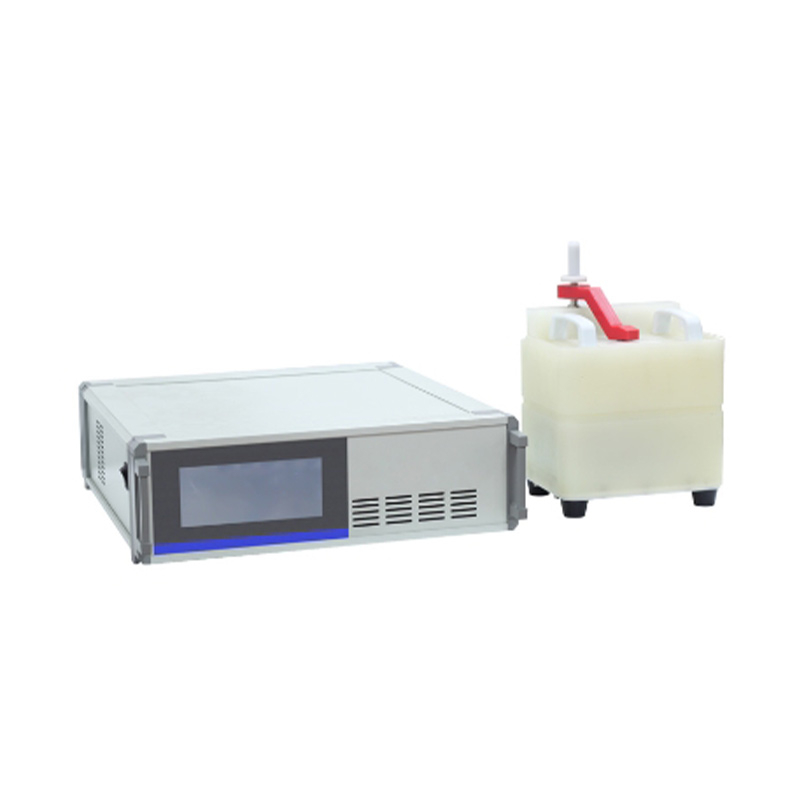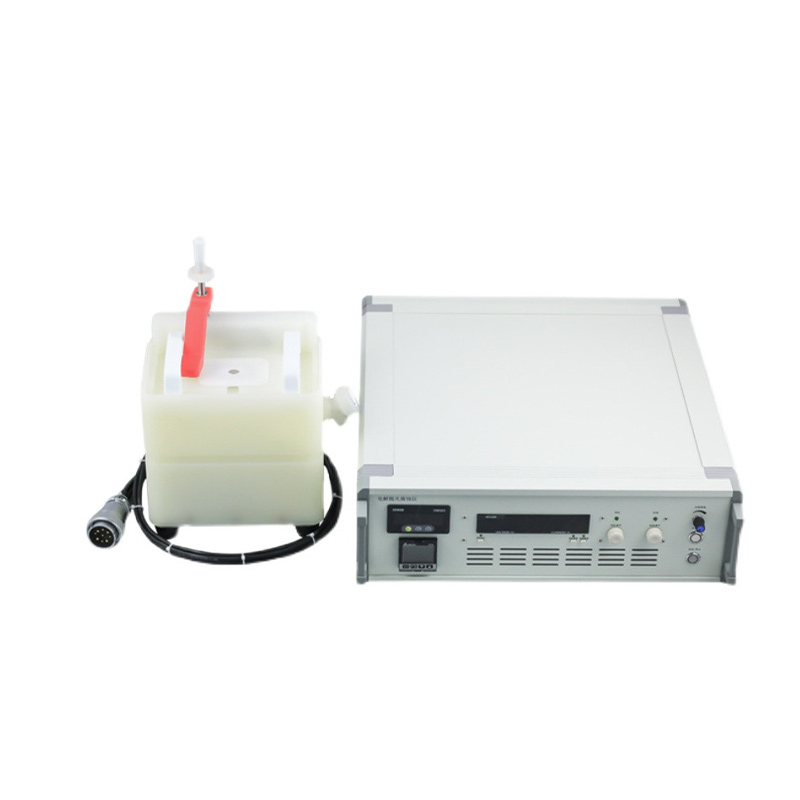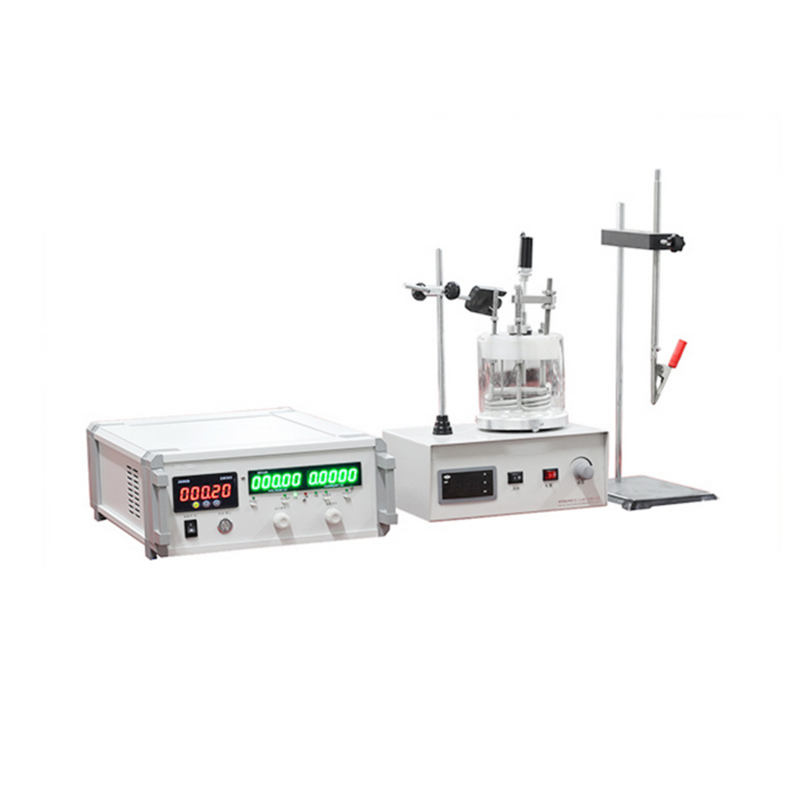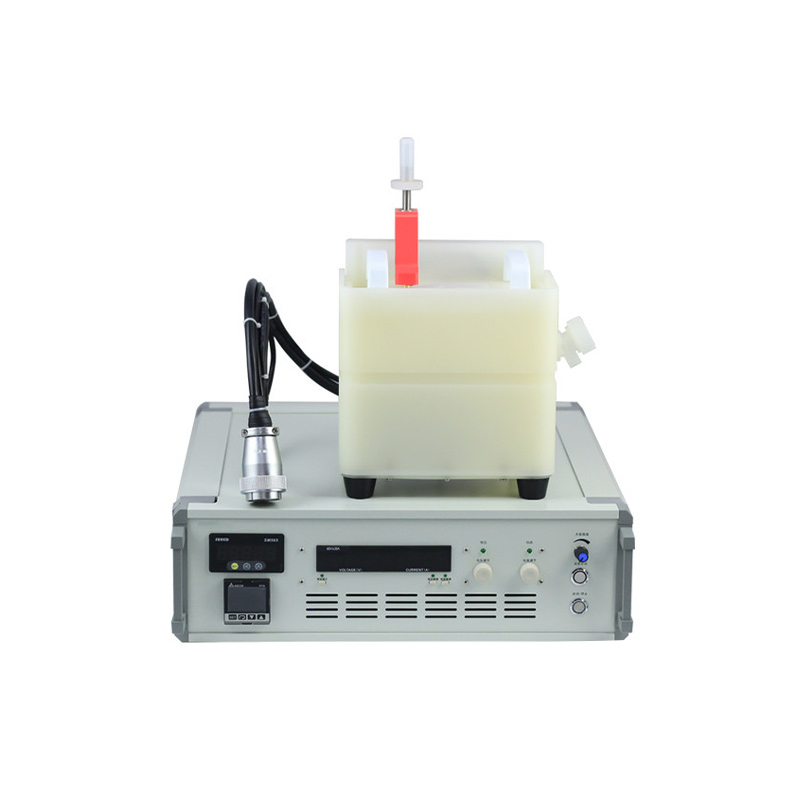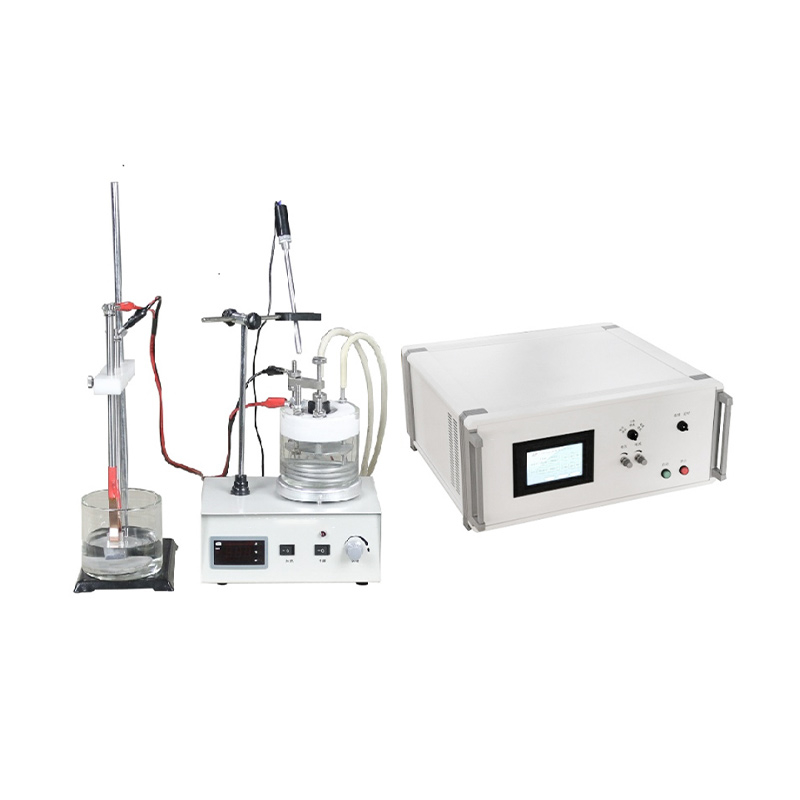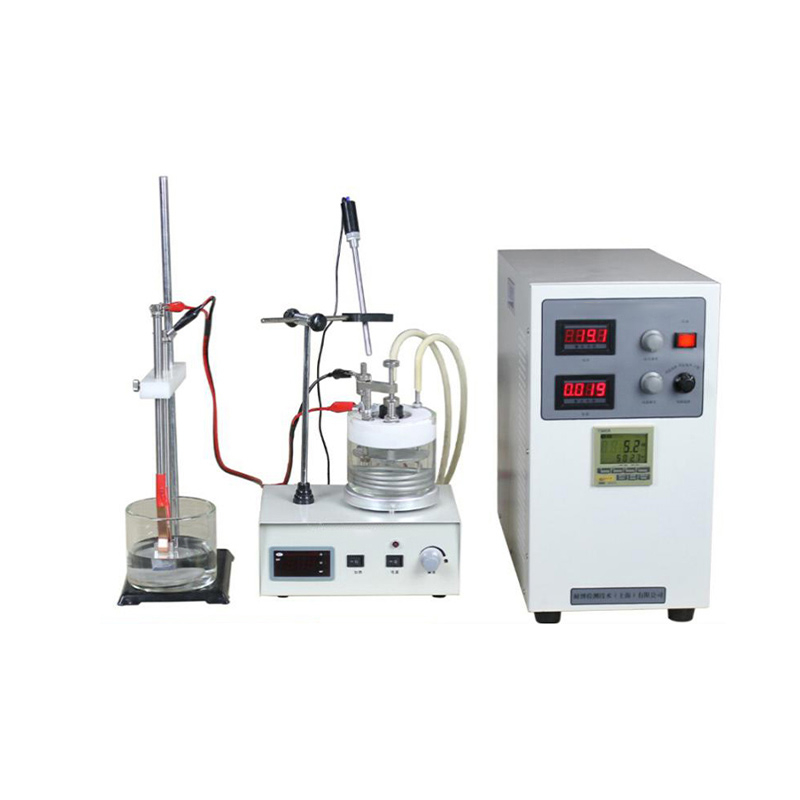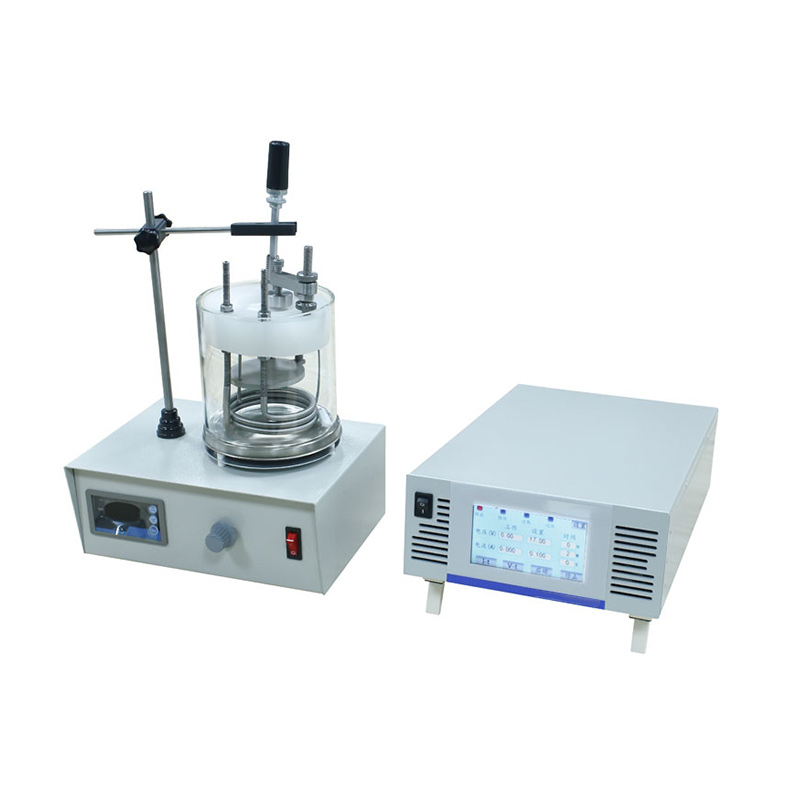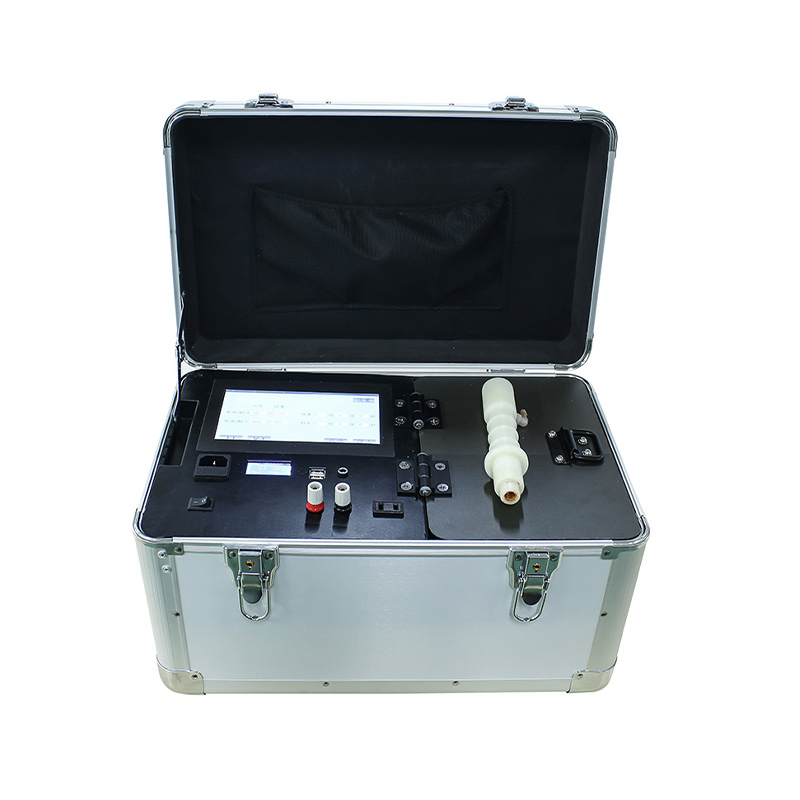CY-3000 electrolytic polishing etch meter is a metallographic sample making instrument which integrates the functions of electrolytic polishing and etching. Suitable for factories, colleges and universities, research institutions and other laboratory use. The equipment uses the principle of electrochemistry for the preparation of metallographic samples, can also be used for the polishing of metallographic samples, can also be used for the corrosion of metallographic samples, with the advantages of fast sample preparation, good repeatability, no deformation layer of mechanical processing, is the ideal equipment for the preparation of nonferrous metal samples, steel, especially stainless steel.
Product characteristics:
one Touch screen to set parameters, display voltage time, current time curve, temperature time curve, U disk to export experimental data.
2. Current and voltage scanning, automatic polarization curve measurement: used to confirm the specific voltage and current of electrolysis or polishing. After the curve is generated, it is used to obtain the best parameters (options) suitable for corrosion and polishing of the material.
3. To achieve constant current and constant voltage working mode;
4. Dc 0~60V / 0~20A (or 0~100V / 0~12A); Current/voltage values can be customized;
5. Accurate and stable setting of current value, current regulation, accuracy after three decimal places, current accuracy :0.001A;
6. Accurate and stable set voltage value, voltage regulation, accuracy after two decimal places, voltage accuracy :0.01V
Seven. The working voltage and current can be input to the computer for further data analysis and research (optional: one of the three connection methods of RS232, RS485, wireless connection and computer connection).
8. Power supply overvoltage, overheating and mains input overvoltage and undervoltage protection;
9. The polishing/etching area of the sample can be controlled (the diameter of the opening hole of the sample cover is 10mm, 15mm, 20mm);
10. Set and control polishing/etching working hours;
11. Solution temperature real-time digital display, exceeding the set temperature automatic alarm (optional); Automatically turn on cooling device (optional);
twelve The stirring device ensures that the polishing/etching medium is uniform and the sample surface environment is consistent.
Contact information:
If you are interested in our products, please contact us for more information and a quote.
Phone:+86 136 6380 8508
Email:jason@cysitech.com
Sales manger:Jason.Zhang
WhatsApp:+86 150 3827 2566
Wechat:cykytech
Technical parameters:
1. Constant voltage, constant current mode of operation;
2. Output voltage :0-60V continuous adjustable, adjustment accuracy 0.01V
3. Output current :0-5A, adjustment accuracy :0.001A
4. Polishing time: 0-999s can be set
5.10 Group polishing corrosion process parameters
6. When polishing corrosion, the voltage and current can be adjusted at any time.
7. Polishing area: 10mm diameter circle area
8. Polishing handle length: 12cm
9. Polishing corrosion pipeline length: 0.8m
10. Electrolyte circulation velocity: 0-300 ml/min continuous adjustable, residual electrolyte on the workpiece, recyclable
11. Volume of electrolyte box: 500ml (1000ml optional)
12. Using high-capacity lithium power battery, capacity: 84000mAH (3.7V), peak power: 500W. In normal operation, there is no need to charge and the working time is more than 16 hours
13. Display the percentage of remaining battery power, and with a low power alarm, in order to charge in time
14. The battery output 220V at the same time, the company's following products can directly use the power supply for a long time:
l Portable MAP-1 field polishing machine (optional)
lM-20D Portable Metallographic microscope (optional)
15. Size: 43x27x26cm
16. Weight: 10kg
Application case:
Stainless steel sample handling
Experimental purpose
The surface of stainless steel samples is treated by electrolytic polishing instrument to remove surface scratches, oxide layer and other defects, and obtain a smooth, mirror-like surface for subsequent microstructure analysis or improvement of material surface properties.
Experimental equipment and materials
Electrolytic polishing instrument 2. Stainless steel sample 3. Electrolyte (according to the stainless steel material to choose the appropriate formula, such as phosphoric acid + sulfuric acid + water mixed solution) 4. Dc power supply 5. Electrolyzer 6. Tweezers 7. Anhydrous ethanol 8. Hair dryer
Experimental procedure
Sample pretreatment
1. Use sandpaper to grind the surface of the stainless steel sample step by step. Start with coarse sandpaper (such as 200 mesh), and then replace with finer sandpaper (400 mesh, 800 mesh, 1200 mesh), each sandpaper should be polished 90° from the previous step to ensure that the scratches are evenly distributed and gradually refined until the scratch on the sample surface is difficult to detect by the naked eye. 2. The polished sample is ultrasonic cleaned in anhydrous ethanol for 5 minutes to remove the impurities attached to the surface, and then dry with a hair dryer.
Electrolytic polishing operation
1. According to the selected electrolyte formula, accurately configure the appropriate amount of electrolyte and pour it into the electrolytic cell to ensure that the depth of the electrolyte can completely immerse the sample surface to be polished. 2. Install the anode and cathode of the electrolytic polisher in the corresponding positions of the electrolyzer, and connect the DC power supply. Ensure that the connection line is stable and there is no risk of short circuit. 3. Use tweezers to pick up the pre-treated stainless steel sample, so that the surface to be polished is vertically immersed in the electrolyte, and the sample immersion depth is about 3 cm. The sample acts as the anode and is connected to the positive electrode of the DC power supply, and the cathode is connected to the negative electrode. 4. Start the DC power supply and slowly adjust the voltage to the preset value. Meanwhile, start the timer. In the process of electrolytic polishing, the surface changes of the sample are observed, and it will be found that the surface gradually becomes bright and a small number of bubbles are generated. 5. As the polishing progresses, adjust the voltage and time according to the surface condition of the sample. If it is found that there is local corrosion on the surface or the polishing effect is poor, the voltage can be slightly reduced or the polishing time can be shortened; If the surface is still not bright enough, the voltage can be appropriately increased or the time can be extended within the safe range. The general polishing time is controlled within 10 minutes.
Postprocessing
1. After reaching the predetermined polishing time, quickly turn off the DC power supply, remove the sample from the electrolyte with tweezers, and immediately soak it in anhydrous ethanol to terminate the electrolytic reaction and clean the residual electrolyte on the surface of the sample. 2. Ultrasonic cleaning of the sample in anhydrous ethanol for 3-5 minutes to further remove impurities and electrolyte traces that may remain on the surface. 3. Finally, dry the sample with a hair dryer to obtain the electrolytically polished stainless steel sample, whose surface should show a smooth, mirrle-like effect, which can be used for subsequent detection and analysis, such as metallographic microscope observation of microstructure, hardness testing, etc.
Matters needing attention
1. Harmful gases will be produced in the electrolytic polishing process, which should be operated in a well-ventilated environment, and a fume hood can be used if necessary. 2. The electrolyte is corrosive. Wear protective equipment such as protective gloves and goggles to prevent the electrolyte from touching your skin and eyes. In case of contact, rinse immediately with plenty of water and seek medical attention according to the situation. 3. The regulation of voltage and current should be carried out slowly to prevent the sample from overheating or other abnormal conditions caused by excessive current. 4. After the end of the experiment, clean the electrolytic cell and electrode in time, properly dispose of the electrolyte, and avoid environmental pollution.

